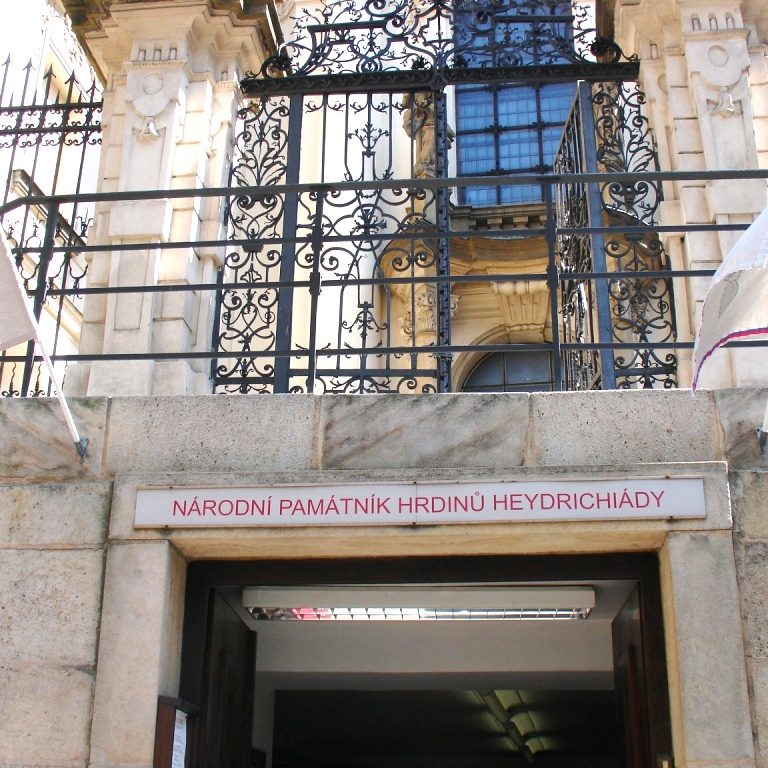Church of St Constantine and St Methodius, Resslova Street, Prague – New Town, Czech Republic

| Address: | Pravoslavný kostel Cyrila a Metoděje, Resslova 307/ 9a, 120 00 Praha 2 |
|---|---|
| Description of work: | Repair of the walls
Redecoration of the walls |
| Investor: | The Municipal Council of the Capital City of Prague |
| Contractor: | GEMA ART GROUP a.s. |
| Implementation: | 05-06/2012 |
The repair of the Greek Orthodox Church of St Constantine and St Methodius is one of GEMA ART GROUP’s shared contracts. The location has a rich history, going back to early medieval times. Prince Bořivoj I commissioned around the year 883 the erection on this site of a church dedicated to St Methodius, who christened both him and his wife Ludmila in the Great Moravian Velehrad.
During the Hussite wars of the 15th century the church was destroyed beyond repair. Between 1730 and 1740 a new Roman Catholic Church dedicated to St Carl Borromaeus was built on the site. Initially the construction was overseen by the architect Paul Ignatius Bayer and from 1733 his work was taken over by Christian Spannbruker and Kilian Ignaz Dientzenhofer. Nevertheless, a few decades later the church was abolished as part of the reforms instigated by Emperor Josef II and from 1785 the building housed army barracks and warehouse.
The Czech Greek Orthodox Church was given the building in 1933, mainly thanks to the efforts of Bishop Gorazd (own name Matěj Pavlík). The Church of St Constantine and St Methodius has gained its significant place in Czech history during the World War II, when its crypt became the refuge of Josef Gabčík and Jan Kubiš, the two parachutists responsible for the assassination of the Deputy Reich-Protector of Bohemia and Moravia Reinhard Heydrich on May 27th 1942. Another five resistance fighters involved in the assassination – Josef Valčík, Adolf Opálka, Josef Bublík, Jan Hrubý and Jaroslav Švarc also hid in the church, assisted by the chaplain Vladimir Petřek, the priest Václav Čikl and with the approval of the Bishop Gorazd.
The parachutists were only discovered by the Germans on 18th June 1942, betrayed by their comrade parachutist Karel Čurda, who gave information about the assassination to the Prague Gestapo office housed in Petschek Palace. 700 German soldiers took part in the operation to capture the parachutists, which lasted several hours and ended with the deaths of all of the resistance fighters, despite the Nazis’ efforts to take them alive. During the fighting the church was considerably damage by shelling. All individuals who provided help to the parachutists were shortly afterwards executed Kobylisy shooting range in Prague or sent to Mauthausen concentration camp.
After the end of the Second World War an extensive reconstruction of the church was called for. Completion of the repairs was marked on 5th July 1947 by ceremonial consecration of the church. On 28th October 1948 a bronze commemorative plaque with bas-reliefs of the parachutists was unveiled. The whole event is remembered every year with a special mass celebrated on 18th June.
In 1995 the Greek Orthodox Church of St Constantine and St Methodius was declared a Memorial to the heroes of the Heydrich assassination and its aftermath. The church is opened to visitors, who can examine the interior, the crypt and the permanent exhibition in the church hall.
During May and June 2012 the company GEMA ART GROUP a.s. carried out maintenance work in the church interior, which included some repairs and redecoration of the walls. All work was completed by 16th June 2012.












